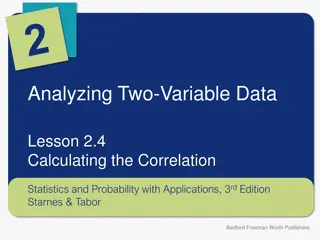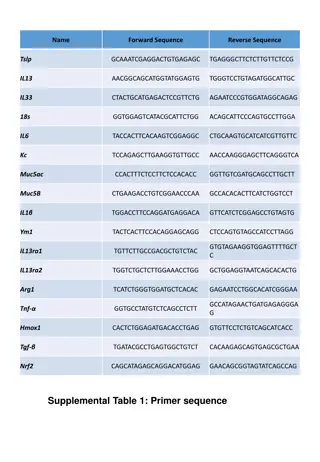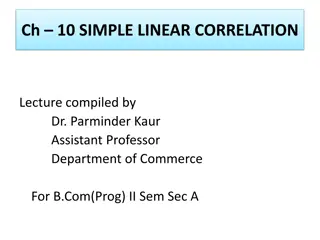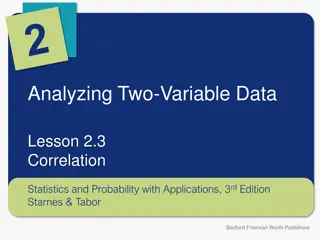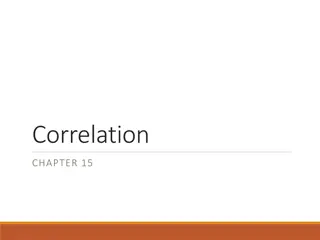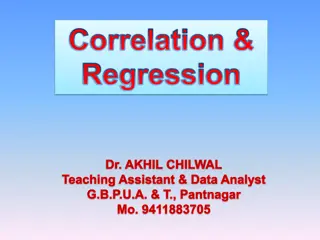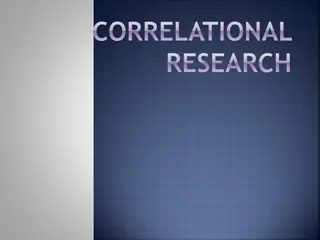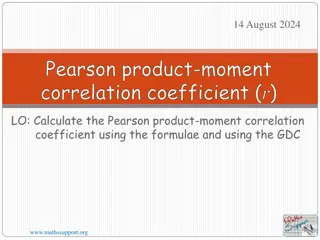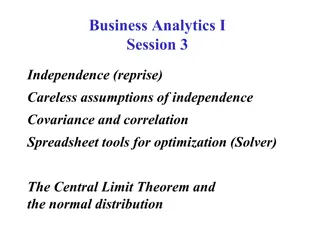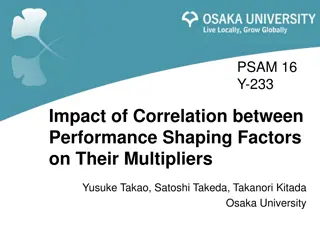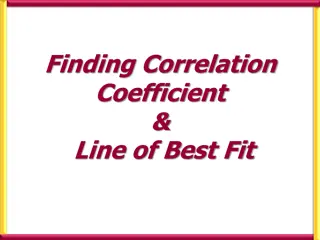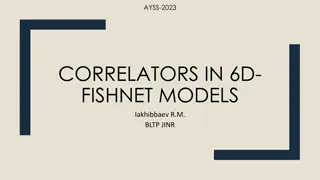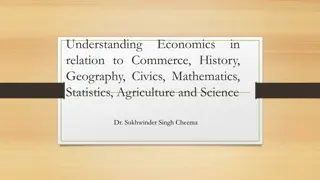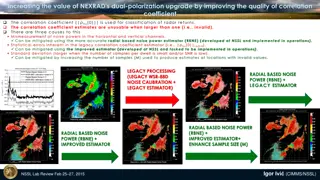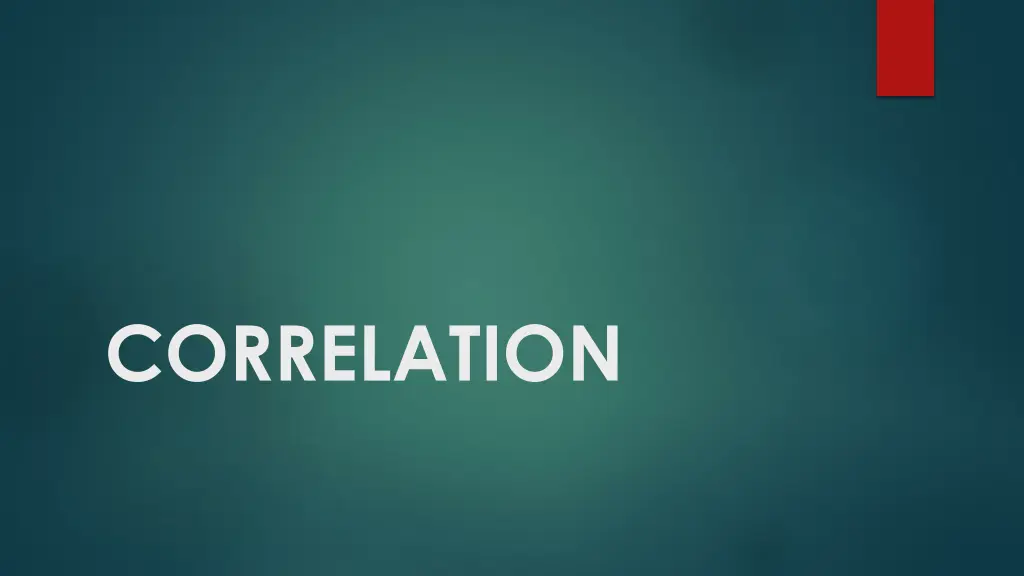
Understanding Correlation in Statistics
Correlation is a statistical measure of the relationship between variables, indicating how changes in one variable are associated with changes in another. Positive, negative, and zero correlations, as well as types like simple, partial, and multiple correlations, provide valuable insights into data patterns and interactions.
Download Presentation

Please find below an Image/Link to download the presentation.
The content on the website is provided AS IS for your information and personal use only. It may not be sold, licensed, or shared on other websites without obtaining consent from the author. If you encounter any issues during the download, it is possible that the publisher has removed the file from their server.
You are allowed to download the files provided on this website for personal or commercial use, subject to the condition that they are used lawfully. All files are the property of their respective owners.
The content on the website is provided AS IS for your information and personal use only. It may not be sold, licensed, or shared on other websites without obtaining consent from the author.
E N D
Presentation Transcript
Definition The Correlation is a statistical tool used to measure the relationship between two or more variables, i.e. the degree to which the variables are associated with each other, such that the change in one is accompanied by the change in another.
Types of Correlation: 1. Positive Correlation A correlation in the same direction is called a positive correlation. If one variable increases the other also increases and when one variable decreases the other also decreases. For example, the length of an iron bar will increase as the temperature increases. Examples: Price and Supply Sales and Expenditure on Advertisement Yield and Fertilizer Applied
2. Negative Correlation Correlation in the opposite direction is called a negative correlation. Here if one variable increases the other decreases and vice versa. For example, the volume of gas will decrease as the pressure increases, or the demand for a particular commodity increases as the price of such commodity decreases. Examples: Price and Demand Yield and Weed
3. No Correlation or Zero Correlation If there is no relationship between the two variables such that the value of one variable changes and the other variable remains constant, it is called no or zero correlation.
4.Simple Correlation When only two variables are considered as under positive or negative correlation, the correlation between them is called simple correlation. 5.Partial Correlation When more than two variables are considered, the correlation between two of them when all other variables are held constant, i.e. when the linear effects of all other variables on them are removed , is called partial correlation. 6.Multiple Correlation When more than two variables are considered, the correlation between one of them and its estimate based on the group consisting of the other variables is called partial correlation.
7. Linear Correlation Correlation is said to be linear if the ratio of change is constant. When the amount of output in a factory is doubled by doubling the number of workers, this is an example of linear correlation. In other words, when all the points on the scatter diagram tend to lie near a line which looks like a straight line, the correlation is said to be linear.
8. Non Linear (Curvilinear) Correlation Correlation is said to be non linear if the ratio of change is not constant. In other words, when all the points on the scatter diagram tend to lie near a smooth curve, the correlation is said to be non linear (curvilinear).



